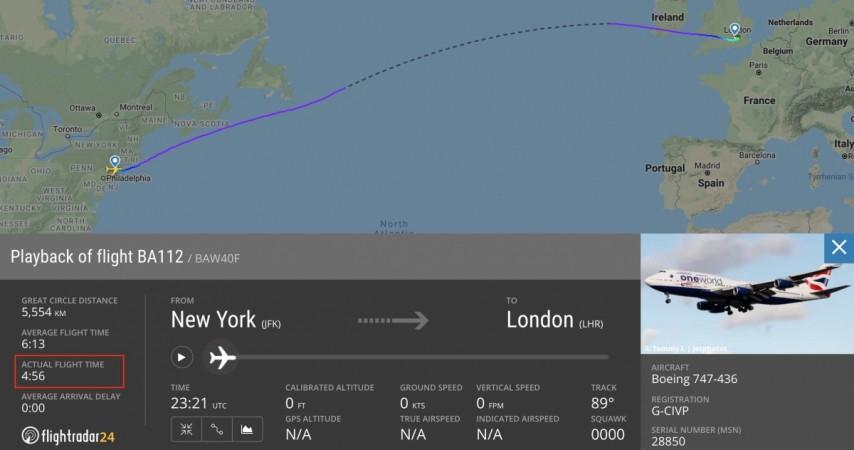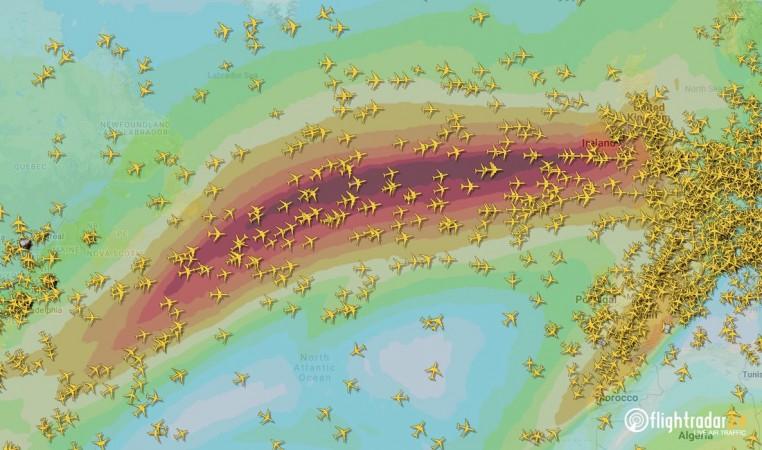Isn't it wonderful to land on time? But it surely doesn't meet the joy of landing almost two hours early. That's what happened on Sunday, when a commercial passenger flight covered a distance of 3,500 miles (5,554 kms), flying across the Atlantic, in less than 5 hours. Passengers who boarded British Airways flight to New York in John F. Kennedy International Airport witnessed a history into the making.
A British Airways flight now holds the new speed record for subsonic commercial aircraft to fly between two cities - in this case, New York and London. Flightradar24, which tracks global flights, announced the new achievement, which replaces the previous record of 5 hours and 13 minutes flight time between two cities.
The Boeing 747 aircraft flew overnight from NY to Heathrow airport in four hours and 56 minutes. According to the flight tracker, the BA112 flight touched a maximum of 825 mph (1,327 km/h). The flight landed at Heathrow airport at 4.43 a.m. (local time), instead of its scheduled arrival time of 6.25 a.m.

"We always prioritise safety over speed records, but our highly trained pilots made the most of the conditions to get customers back to London well ahead of time," the airlines said about its new speed record.
British Airways claimed the record title from Norwegian, whose Boeing 787-9 Dreamliner covered the same distance in 5 hours and 13 minutes in 2018. The BA flight wasn't the only one to break Norwegian's record as the Flightradar24 found that Virgin Atlantic's flight VS4 landed a minute after BA112.
The Virgin Airbus A350-1041 covered the same flight in 4 hours and 57 minutes. In response to this, Virgin Atlantic said, "It's true that we were narrowly beaten by a BA Boeing 747, however, they had twice the amount of engines and burnt twice as much fuel as Captain Chris in our brand new, fuel-efficient Airbus A350-1000."
Records broken courtesy Storm Ciara?

Both British Airways and Virgin Atlantic planes managed to set new records, but it was made possible by strong tailwinds as Storm Ciara blew in. This advantage worked only for flights travelling eastbound over the North Atlantic. In addition to decreasing flight times, fuel consumption was also reduced.
"Coming back the other way, flights are routing to the north of the jet stream over Greenland. This is having a varying effect on flights depending on origin and destination. Some flights are adding more than 60 minutes, while others that manage to avoid the jet stream entirely are in some cases arriving early," Flightradar24 said in a blog post.















